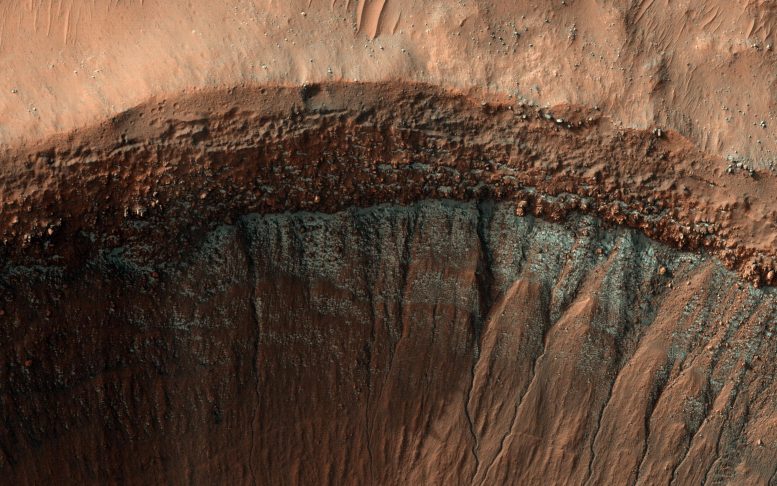
This image of a crater near 37 degrees south latitude on Mars was captured in the middle of winter in Mars’ Southern Hemisphere. Patchy sparkling frost blankets the south-facing slope, which has taken on a blue hue in this enhanced-color photograph. This frost occurs in and around the slope’s many gullies. Credit: NASA/JPL-Caltech/University of Arizona
On the surface of Mars, a layer of carbon dioxide frost (dry ice) forms every winter. At its maximum extent in mid-winter, this frost reaches from the poles down to the middle latitudes, until it is too warm and sunny to persist. In most places, this is around 50 degrees latitude, similar to the latitude of southern Canada on Earth.
However, small patches of dry ice are found closer to the equator on pole-facing slopes, which are colder because they receive less sunlight. This image was taken in the middle of winter in Mars’ Southern Hemisphere, and shows a crater near 37 degrees south latitude. The south-facing slope has patchy bright frost, blue in enhanced color. This frost occurs in and around the many gullies on the slope, and in other images, has caused flows in the gullies.
Dry ice is the solid form of carbon dioxide (CO2). It does not have a liquid state and sublimates directly from the solid state to the gas state.


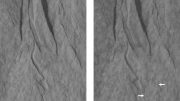
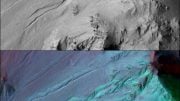
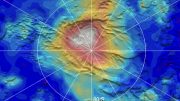
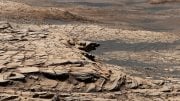
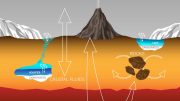
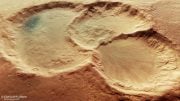
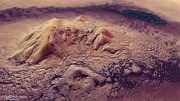
Be the first to comment on "Cold as (Dry) Ice on Mars"